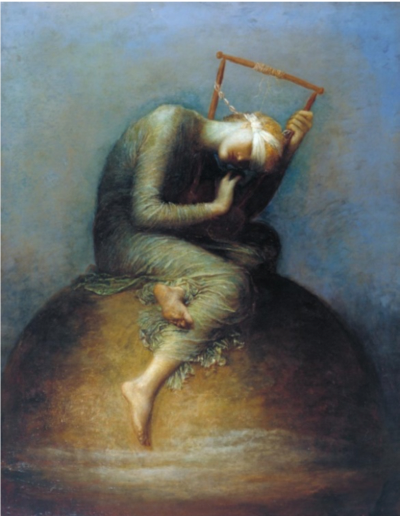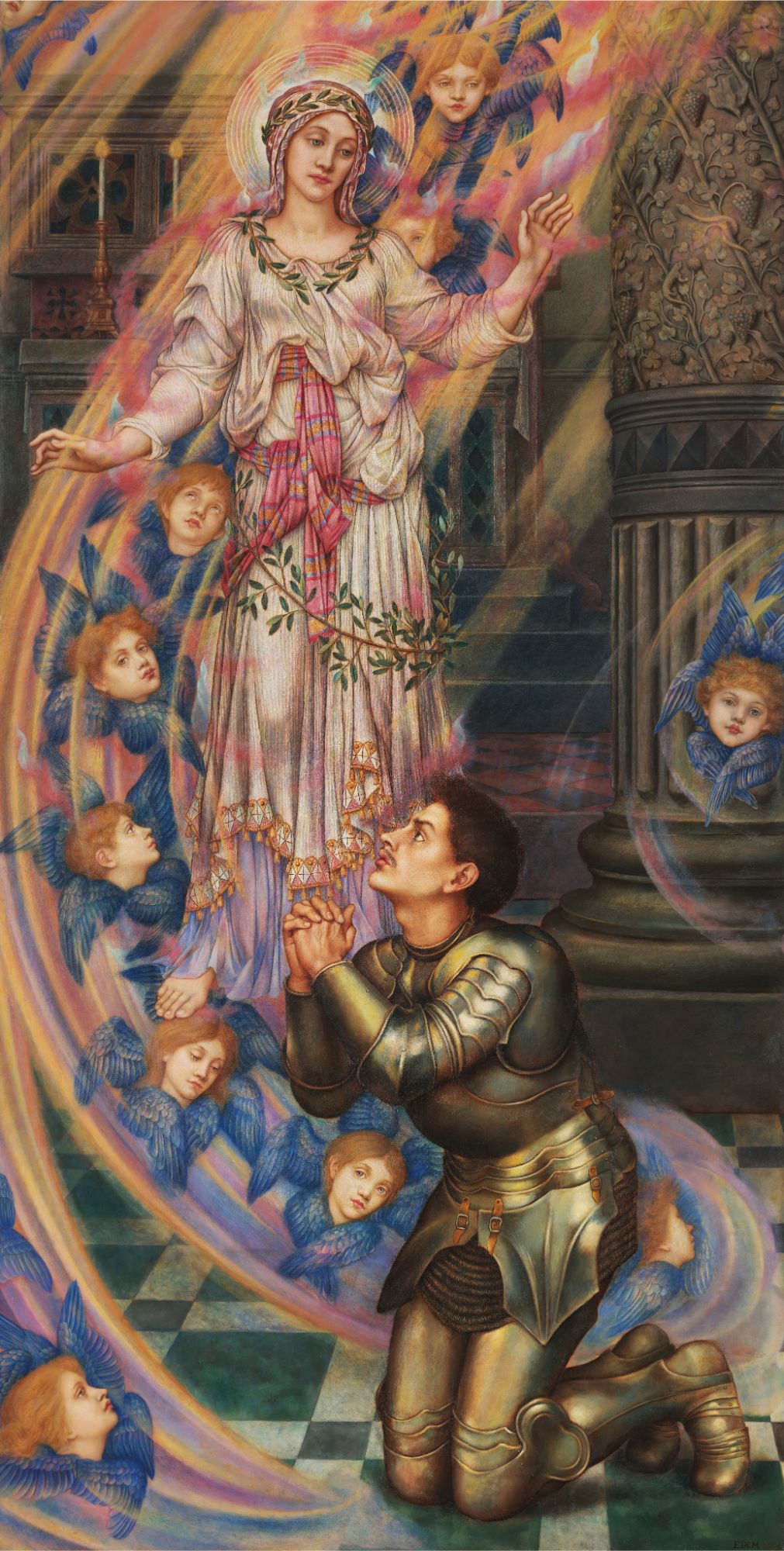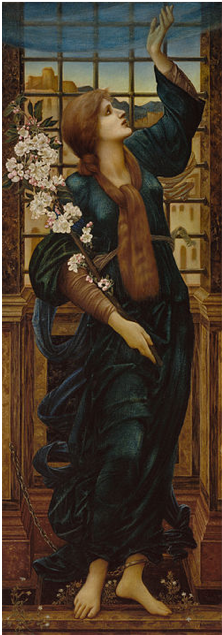In celebration of our 2021 exhibition ‘Artist of Hope’ at Towneley Hall in Burnley, we are celebrating Victorian painters’ responses to hope. Volunteer Hannah Crichton reveals more.
Art has emotive power, especially when hope is the subject matter or thematic keystone. The artistic work of the Victorian era is known for its romantic leanings, strong use of bygone or mythical figures, symbolism, and allegory. The very use of hope within an artwork suggests allegorical engagement, and the artist’s interest to connect with the human existence.
G. F. Watts (1817-1904) utilised allegorical subject matter when creating ‘Hope’ (1886), which depicts the female figure representative of the aspiration. Traditionally, Hope is identified by an anchor, but Watts omitted this imagery. Instead Watts painted Hope seated on a globe, the strings of her lyre broken save for one. The atmosphere of the painting is melancholy and forlorn; the dark pigments aid this reading, as does the brushwork and translucent mist which envelops the globe and the bowed figure of Hope. Despite the gloom and being blindfolded, Hope attempts to catch the faint music by placing her ear near the solitary lyre cord, the very movement a personification of hopefulness.
It is suggested that this piece was influenced by Watts’ own sorrow at the death of his adoptive, one-year old daughter Blanche, which aligns with the concept that allegorical work is often inspired by human existence and experiences. Despite being a titan of Victorian art, Watts received criticism for this piece, with the art critic G.K. Chesterton going so far as to suggest that ‘Despair’ would be a more apt title. Overall, this piece was well-received, and it was intended to be an aspect of ‘The House of Life’, a mural intended to convey Watts’ world view. Watts was greatly inspired by Greek sculpture, Michelangelo, and Titian, and his body of work centres on symbolic, mythical, and allegorical pieces that promoted art as the new, modern religion that was inclusive of all human experiences and social tires. ‘Hope’ is currently on display at Watts Gallery – Artists’ Village.

Hope by George Fredrick Watts (1817-1904) Watts Gallery – Artists’ Village care of Privat Collection
Within ‘Our Lady of Peace’ (1907), Evelyn De Morgan (1855-1919) subverts traditional Christian and chivalric imagery by broadening the human emotion and engagement of the kneeling knight. He is nervous, despite being at prayer, and it is interpreted that he not only asks the Virgin Mary for protection, but demonstrates the idealistic hope that his actions are just, and will herald peace during a time of conflict. De Morgan created this artwork in response to the Boer War (1899-1902), with the composition strongly advocating for an end to the warfare, personified by the supplicating knight. The depiction of the Blessed Virgin Mary shows her surrounded by celestial, cherubic rainbows, which descend from Heaven, and she herself is festooned by laurel wreaths. These are strong, known representations of salvation, victory, redemption, and hope. De Morgan was no stranger to allegorical artwork, and this piece demonstrates her strong interest in contemporary events and wider human existence. ‘Our Lady of Peace’ is in the custodianship of the De Morgan Foundation.

Our Lady of Peace 1907, by Evelyn De Morgan
‘Hope’ (1896) was one of Edward Burne-Jones’ (1883-1898) final artworks, and is currently held by the Museum of Fine Art. The artwork depicts an allegorical figure rendered in the Renaissance tradition; the woman, long-limbed and stepping forward, is Botticelli-esque. Already confined to a narrow space, a shackle fastened around her ankle restricts the woman further. She reaches towards the sky, which spreads above and beyond the cage-like bars of the window. The apple blossoms the woman holds further the representation of hope.
This artwork was commissioned by Ms George Maston Whitin of Massachusetts. Although she originally requested a revelling, dancing girl, Burne-Jones asked if he could produce a piece exploring hope instead, as he was devastated over the recent death of his friend and colleague William Morris. ‘Hope’ depicts on canvas what Burne-Jones once penned on paper:
I mean by a picture a beautiful romantic dream of something that never was, never will be – in a light better than any light ever shone – in a land no one can define or remember, only desire – and the forms divinely beautiful.

Edward Burne-Jones (1883-1898) Museum of Fine Arts, Boston
These three artworks engage with hope. A representative, allegorically figure of hope is demonstrated in the artworks of Watts and Burne-Jones, while De Morgan’s oil painting depicts an aspiration addressed within the artwork. As these three pieces highlight, Victorian era art was allegorical and symbolic in nature, and art often mimicked life, and vice versa. Hope was felt by these three artists in varying aspects of their lives, from personal, familial impact to wider, society-encompassing events with large scale repercussions. These works evoke strong emotional responses, and although allegorical, they are grounded by the realism and materialism of events that resonate with contemporary viewers.





